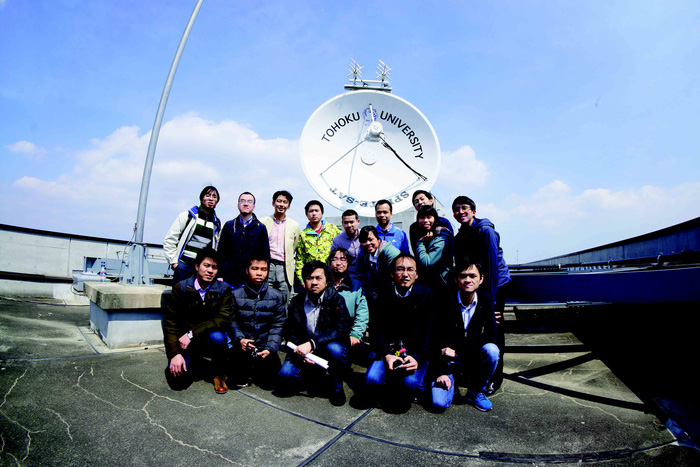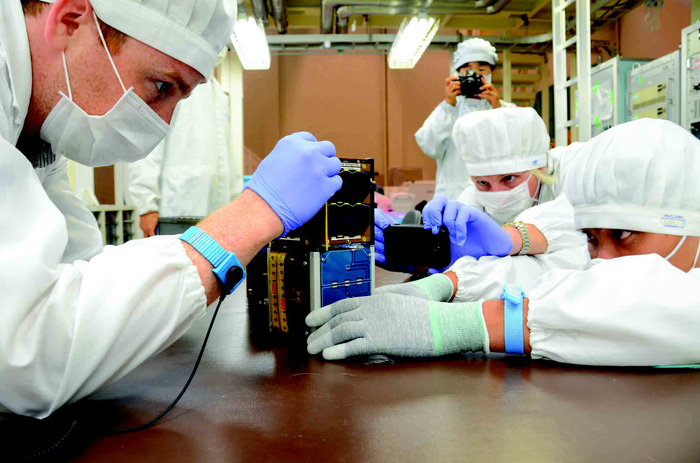A Vietnamese-made satellite is now ready to go into space this year.
The MicroDragon satellite, developed by researchers from the Vietnam National Space Center (VNSC), is expected to be launched into space by Japan’s Epsilon rocket within 2018.
Following the successful debut of Vietnam’s first-ever satellite, the PicoDragon, Dr. Pham Anh Tuan, general director of the VNSC, and his partners decided to carry out another satellite project on a larger scale, the MicroDragon.
The PicoDragon weighed one kilogram and was put into orbit around the earth in 2013.
In order to conduct the new project, the VNSC sent 36 of its young engineers to five top universities in Japan for master’s programs in satellite technology.
The team also had a chance to design, produce, and test the MicroDragon under the mentorship of Japanese professors.
The satellite, measuring 50x50x50 centimeters and weighing 50 kilograms, is designed to monitor the quality of water in coastal areas, locate fishery resources, and observe changes in the ocean to assist the nation’s aquaculture.
It can also be used to trace the origin of oil spills and supervise ships at sea, Dr. Tuan said, adding that images provided by the satellite can help detect strange vessels near the country’s maritime sovereignty.
Natural disasters cost Vietnam about 1.5 percent of its GDP, equivalent to US$3 billion, every year, Tuan quoted the findings of Japanese experts as saying.
 |
| Vietnamese engineers at Japan’s Tohuku University. Photo: VNSC |
“With information from a satellite, forecasts of storms and flooding can be made promptly, thus lowering damage by 10 percent, equal to $300 million, and minimizing casualties,” the VNSC head continued.
Images from the MicroDragon can be retrieved after six to 12 hours, he added.
According to Lam Dao Nguyen, director of the Ho Chi Minh City Space Technology Application Center, satellite technology can also be applied to the Mekong Delta region to supervise local farming progress and calculate the most suitable amount of water and nutrition for the plants.
It is essential for Vietnam to develop its own satellite in order to achieve the above benefits, said Dr. Tuan.
The industry can give a boost to such sectors as material industry, mechatronics, and automation, he added.
The VNSC is developing another satellite named LOTUSat, weighing 600 kilograms, which is expected to be launched into orbit in 2019.
The LOTUSat-2 project is anticipated to begin in 2022.
These two satellites will optimize the radar sensing technology to monitor the entire Vietnamese territory, including the sea, providing images with high resolution under all weather conditions.
Like us on Facebook or follow us on Twitter to get the latest news about Vietnam!






















































